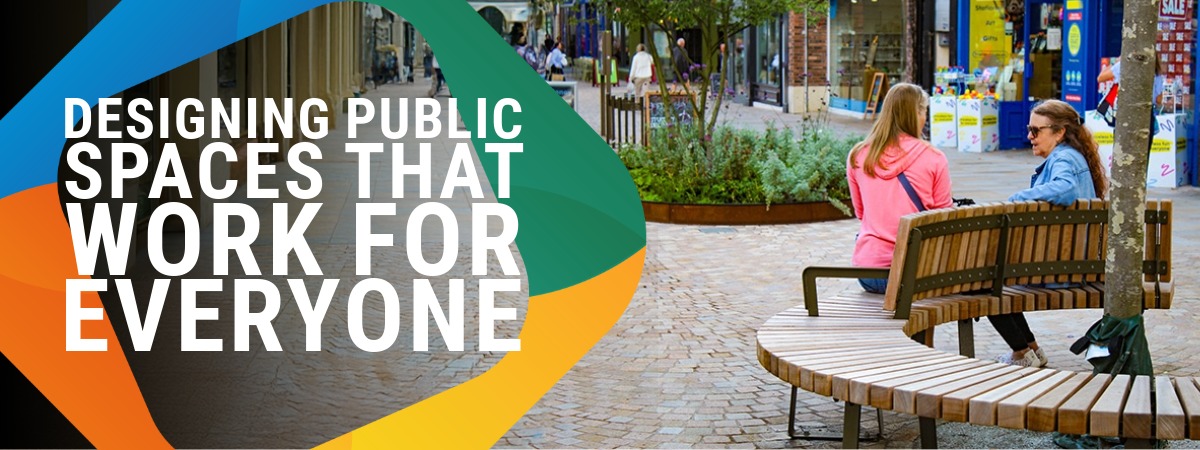Designing Public Spaces That Work for Everyone: Rethinking Accessibility & Inclusivity in the Urban Realm

Across the UK, more than 16 million people live with a disability. That’s almost a quarter of the population – a figure that should fundamentally shape how we design and build our towns and cities. Yet, despite clear legislation and growing awareness, many public spaces still fall short of being genuinely inclusive and accessible.
Accessibility in the public realm isn’t a niche concern or a regulatory hurdle to clear — it’s about creating environments that are welcoming, comfortable and usable for everyone. This extends far beyond wheelchair access, encompassing people with sensory impairments, reduced mobility, learning disabilities, and even those with temporary challenges such as parents with pushchairs or individuals recovering from injury.
Legislation as a Catalyst – Not a Limitation
The Equality Act 2010 sets clear responsibilities for local authorities, service providers, designers and manufacturers. But legislation alone won’t create better spaces. At Bailey Street Furniture Group (BSFG), we see it as a starting point — a framework upon which thoughtful, people-centred design can build.
True inclusivity goes further than compliance. It’s about anticipating the diverse ways people experience and interact with the public realm, and removing barriers before they arise. When designers have the knowledge and confidence to apply inclusive principles, they can shape places that not only meet legal requirements but also genuinely enhance quality of life for all users.
Knowledge That Elevates Design
The difference between a public space that feels exclusive and one that feels welcoming often comes down to the designer’s awareness of how everyday design decisions impact different users. From the placement of seating and pathways to the clarity of navigation, small choices influence how people move, rest, and experience a space.
Designing with accessibility in mind leads to spaces that are more intuitive, comfortable, and engaging for everyone — not just for people with specific access needs. It’s about creating places where no one has to think twice about whether they belong.
Raising the Bar Through Education
While legislation provides structure, knowledge is what drives transformation. Our CPD session — “Maximising Accessibility & Inclusivity in Public Spaces” — is designed to give architects, landscape architects, contractors and site managers the insight and confidence to embed inclusivity from the earliest stages of a project.
By understanding the principles behind inclusive design, professionals can make more informed decisions that result in spaces which are functional, beautiful and genuinely accessible. The outcome? Public environments that not only comply with legal standards, but also foster equity, independence and community connection.
Book Your CPD Today
Inclusive design isn’t optional — it’s essential. As urban spaces continue to evolve, the industry has a responsibility to ensure no one is left on the margins. Thoughtful street furniture design plays a pivotal role in achieving this vision.
Our CPD session: Maximising Accessibility & Inclusivity in Public Spaces is available to book now - Find out more here > https://www.bsfg.co.uk/cpd